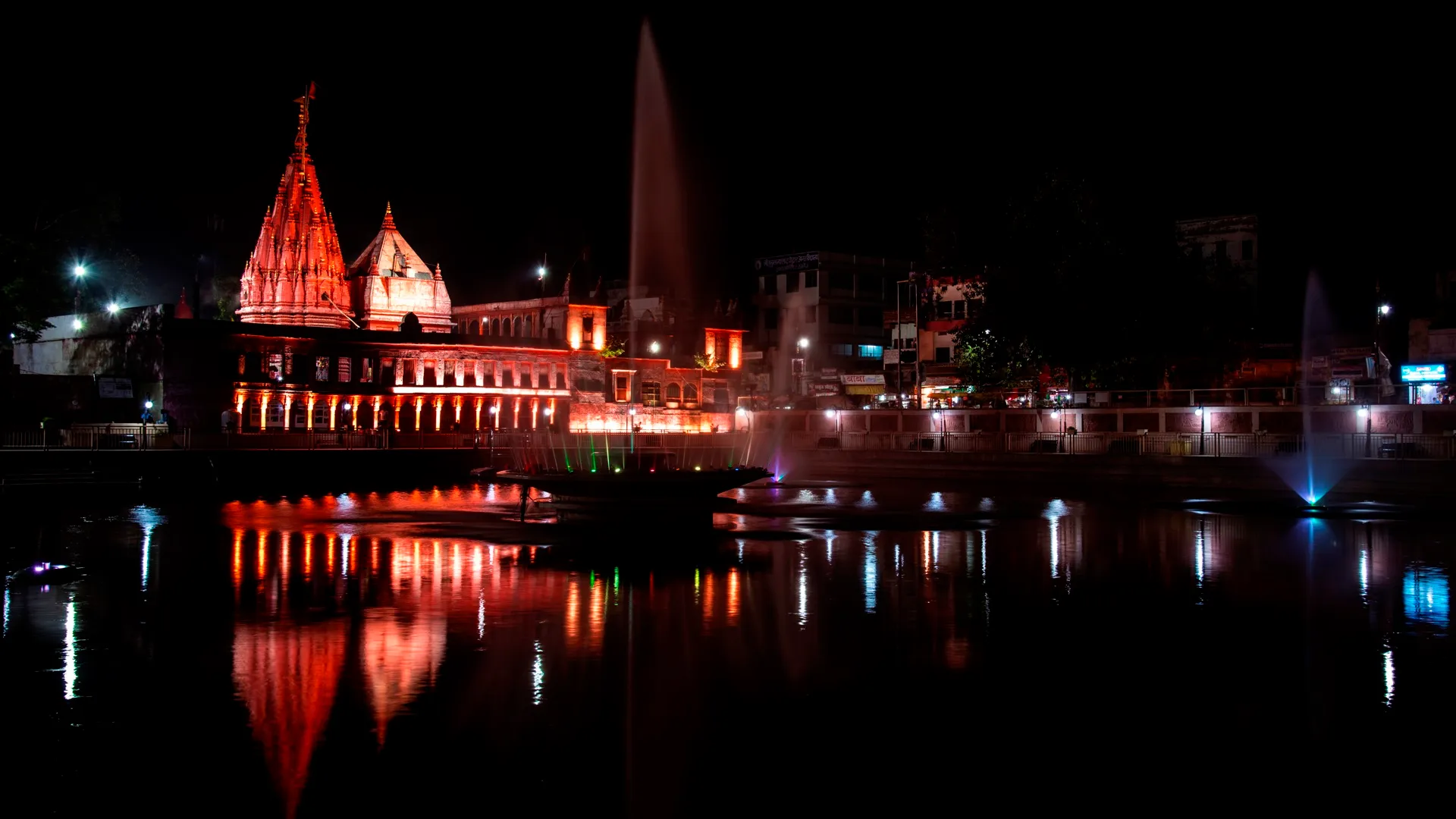Introduction to Varanasi and Lucknow
Varanasi, also known as Kashi, is one of the oldest continuously inhabited cities in the world. Situated on the banks of the sacred River Ganges in the state of Uttar Pradesh, Varanasi is a spiritual hub for Hindus and a center for pilgrimage and learning. The city is famous for its ghats, where devotees perform rituals and ceremonies, and its narrow winding lanes filled with temples, ashrams, and bustling markets.
Cultural Journey through Varanasi and Lucknow

Lucknow, the capital city of Uttar Pradesh, is known for its rich cultural heritage and elegant Nawabi architecture. The city was once the seat of the Nawabs of Awadh, who were known for their refined taste in art, music, and cuisine. Lucknow is a melting pot of cultures, with influences from the Mughal, Persian, and British eras evident in its architecture, cuisine, and traditions.
The Sacred Ghats of Varanasi
The ghats of Varanasi are perhaps the most iconic feature of the city, with over 80 ghats lining the banks of the Ganges. Each ghat has its own significance and is used for different purposes, from bathing and cremation rituals to meditation and yoga practices. The Dashashwamedh Ghat is one of the most popular ghats, where the Ganga Aarti ceremony takes place every evening, attracting thousands of devotees and tourists.
The ghats of Varanasi are not only places of religious importance but also centers of social and cultural activities. Local artisans sell their wares, boatmen offer rides along the river, and Sadhus and pilgrims from all over the country come to seek spiritual enlightenment. The ghats are a vibrant and colorful reflection of the city’s rich cultural heritage and traditions.
Exploring the Nawabi Culture of Lucknow
Lucknow is often referred to as the “City of Nawabs” due to its association with the Nawabs of Awadh, who ruled the region for over 200 years. The Nawabs were known for their love of art, music, and poetry, and their patronage of the arts led to the development of a unique cultural identity in Lucknow. The city is famous for its elegant architecture, with palaces, mosques, and gardens showcasing the grandeur of the Nawabi era.
One of the most famous landmarks in Lucknow is the Bara Imambara, a grand complex built by Nawab Asaf-ud-Daula in the 18th century. The complex includes the Bhool Bhulaiya, a labyrinthine maze that is a popular tourist attraction. Lucknow is also known for its culinary delights, with dishes like kebabs, biryanis, and keema samosas being popular among locals and visitors alike.
Historical Significance of Varanasi
Varanasi has a long and storied history, with references to the city dating back to ancient texts like the Rigveda and the Mahabharata. The city has been a center of learning and spirituality for centuries, attracting scholars, philosophers, and seekers from all over the world. Varanasi has also been a hub of trade and commerce, with silk weaving being a major industry in the city.
The city has witnessed the rise and fall of empires, from the Mauryan and Gupta dynasties to the Mughals and the British. Varanasi has been a melting pot of cultures and traditions, with influences from Hinduism, Buddhism, Jainism, and Islam shaping its identity. The city’s historical significance is evident in its numerous temples, mosques, and palaces, which stand as a testament to its rich past.
Architectural Marvels of Lucknow
Lucknow is renowned for its elegant Nawabi architecture, with buildings like the Bara Imambara, Chota Imambara, and Rumi Darwaza showcasing the grandeur and sophistication of the Nawabi era. The architecture of Lucknow is characterized by intricate carvings, delicate arches, and ornate domes, reflecting the refined taste of the Nawabs in art and design.
The Bara Imambara, built in the 18th century by Nawab Asaf-ud-Daula, is a prime example of Lucknow’s architectural heritage. The complex includes a mosque, a stepwell, and the Bhool Bhulaiya, a labyrinthine maze that is a marvel of engineering. The Chota Imambara, built by Nawab Muhammad Ali Shah, is another architectural gem, with its silver throne and exquisite chandeliers attracting visitors from far and wide.
Religious Festivals in Varanasi
Varanasi is a city of festivals, with religious celebrations taking place throughout the year. The city is known for its vibrant and colorful festivals, which attract pilgrims and tourists from all over the world. One of the most important festivals in Varanasi is Dev Deepawali, which is celebrated on the full moon day of the Hindu month of Kartik. During Dev Deepawali, the ghats are illuminated with thousands of earthen lamps, creating a mesmerizing spectacle.
Another popular festival in Varanasi is Mahashivaratri, which is dedicated to Lord Shiva. Devotees fast and offer prayers to Lord Shiva on this day, and the city comes alive with processions, music, and dance performances. Other festivals like Holi, Diwali, and Durga Puja are also celebrated with great fervor in Varanasi, adding to the city’s festive atmosphere.
Culinary Delights of Lucknow
Lucknow is a paradise for food lovers, with its rich culinary heritage and diverse range of dishes. The city is famous for its kebabs, biryanis, and kormas, which are a testament to the Nawabi influence on Lucknow’s cuisine. Tunday Kababi, a popular eatery in Lucknow, is known for its melt-in-your-mouth kebabs made from a secret recipe passed down through generations.
Lucknow is also famous for its street food, with dishes like chaat, samosas, and jalebis being popular among locals and visitors alike. The city’s sweet shops are a treasure trove of traditional sweets like malai ki gilori, makhan malai, and khoya ki jalebi. Lucknow’s culinary delights are a reflection of its rich cultural heritage and the influence of the Nawabs on its cuisine.
Traditional Arts and Crafts in Varanasi
Varanasi is a hub of traditional arts and crafts, with artisans practicing age-old techniques passed down through generations. The city is famous for its silk weaving industry, with Banarasi silk sarees being renowned for their intricate designs and luxurious feel. The weavers of Varanasi create exquisite patterns using gold and silver threads, creating sarees that are prized for their beauty and craftsmanship.
Apart from silk weaving, Varanasi is also known for its metalwork, wood carving, and pottery. The city’s artisans create stunning pieces of art using brass, copper, and silver, which are sold in markets and shops across the city. Varanasi is also famous for its handloom industry, with fabrics like brocade and muslin being woven using traditional techniques. The city’s arts and crafts are a testament to its rich cultural heritage and the skill and creativity of its artisans.
Influence of Mughal Empire in Lucknow
The Mughal Empire had a significant influence on the culture and architecture of Lucknow, with Mughal rulers like Babur and Akbar leaving their mark on the city. The Mughals introduced Persian and Central Asian influences to Lucknow, which can be seen in the city’s architecture, cuisine, and traditions. The Rumi Darwaza, a grand gateway built by Nawab Asaf-ud-Daula, is inspired by the architecture of the Mughal period.
Lucknow’s cuisine also bears the imprint of the Mughal era, with dishes like kebabs, biryanis, and kormas being popular in the city. The Mughals were known for their love of art and poetry, and their patronage of the arts led to the development of a rich cultural heritage in Lucknow. The city’s music, dance, and literature are a reflection of the Mughal influence on its culture.
Conclusion: A Cultural Fusion in Varanasi and Lucknow
Varanasi and Lucknow are two cities that epitomize the rich cultural heritage of India, with their vibrant traditions, historical significance, and architectural marvels. Varanasi’s sacred ghats and religious festivals are a testament to the city’s spiritual legacy, while Lucknow’s Nawabi architecture and culinary delights showcase the city’s refined taste and sophistication.
The cultural journey through Varanasi and Lucknow is a fascinating exploration of India’s diverse heritage, with influences from Hinduism, Islam, Buddhism, and the Mughal Empire shaping the identity of these cities. The fusion of traditions, arts, and crafts in Varanasi and Lucknow creates a unique cultural tapestry that is a delight to explore and experience. Whether it’s witnessing the Ganga Aarti on the ghats of Varanasi or savoring kebabs in Lucknow’s bustling markets, a visit to these cities is sure to leave a lasting impression on any traveler. Varanasi and Lucknow are not just cities, but living embodiments of India’s rich and diverse cultural heritage.





